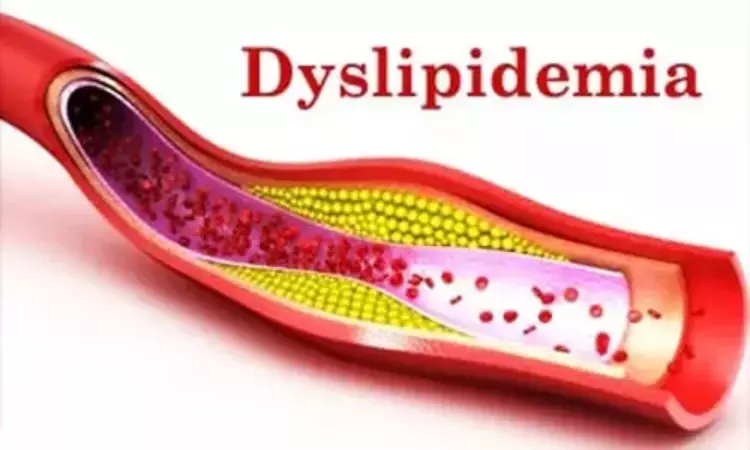- Home
- Medical news & Guidelines
- Anesthesiology
- Cardiology and CTVS
- Critical Care
- Dentistry
- Dermatology
- Diabetes and Endocrinology
- ENT
- Gastroenterology
- Medicine
- Nephrology
- Neurology
- Obstretics-Gynaecology
- Oncology
- Ophthalmology
- Orthopaedics
- Pediatrics-Neonatology
- Psychiatry
- Pulmonology
- Radiology
- Surgery
- Urology
- Laboratory Medicine
- Diet
- Nursing
- Paramedical
- Physiotherapy
- Health news
- Fact Check
- Bone Health Fact Check
- Brain Health Fact Check
- Cancer Related Fact Check
- Child Care Fact Check
- Dental and oral health fact check
- Diabetes and metabolic health fact check
- Diet and Nutrition Fact Check
- Eye and ENT Care Fact Check
- Fitness fact check
- Gut health fact check
- Heart health fact check
- Kidney health fact check
- Medical education fact check
- Men's health fact check
- Respiratory fact check
- Skin and hair care fact check
- Vaccine and Immunization fact check
- Women's health fact check
- AYUSH
- State News
- Andaman and Nicobar Islands
- Andhra Pradesh
- Arunachal Pradesh
- Assam
- Bihar
- Chandigarh
- Chattisgarh
- Dadra and Nagar Haveli
- Daman and Diu
- Delhi
- Goa
- Gujarat
- Haryana
- Himachal Pradesh
- Jammu & Kashmir
- Jharkhand
- Karnataka
- Kerala
- Ladakh
- Lakshadweep
- Madhya Pradesh
- Maharashtra
- Manipur
- Meghalaya
- Mizoram
- Nagaland
- Odisha
- Puducherry
- Punjab
- Rajasthan
- Sikkim
- Tamil Nadu
- Telangana
- Tripura
- Uttar Pradesh
- Uttrakhand
- West Bengal
- Medical Education
- Industry
Primordial dyslipidemia prevention in childhood critical for reducing atherosclerosis development

Finland: A recent study published in the Journal of the American Heart Association has suggested that treating or preventing dyslipidaemia in childhood may be critical for avoiding later atherosclerosis.
The study found that the risk for atherosclerosis remains elevated even in people whose dyslipidaemia does not last beyond childhood.
The researchers wrote, "even if resolved by adulthood, childhood dyslipidemia is a risk factor for adult carotid plaque. Also, childhood lipids are associated with plaque size in people with carotid plaque." The findings underscore the importance of primordial dyslipidemia prevention in childhood to reduce atherosclerosis development.
Previous studies have shown an association between childhood exposure to dyslipidemia and adult atherosclerosis. Still, there is no clarity on whether the long-term risk tied to dyslipidemia is attenuated on its resolution by adulthood. Juhani S. Koskinen, University of Turku, Turku, Finland, and colleagues aimed to address this question by assessing the links between childhood and adult dyslipidemia on carotid atherosclerotic plaques in adulthood.
The Cardiovascular Risk in Young Finns Study is a prospective follow‐up of children initiated in 1980; since then, follow-up studies have been regularly conducted. Carotid ultrasounds were performed on 2643 participants in 2001 and 2007 at the mean age of 36 years to identify plaque areas and carotid plaques.
They exploited various risk factor measurements for childhood lipids to determine each lipid's cumulative burden during childhood. Participants were categorized into four groups based on their adult and childhood dyslipidemia status: persistent, resolved, incident, and no dyslipidemia (reference). Linear regression models were used to study the association of serum lipids with plaque area among individuals with carotid plaque.
The study led to the following findings:
- The prevalence of plaque was 3.3% (N=88). In models adjusted for sex, age and nonlipid cardiovascular risk factors, the relative risk for the carotid plaque was 2.34 for incident adult dyslipidemia, 3.00 for dyslipidemia resolved by adulthood, and 5.23 for persistent dyslipidemia.
- Carotid plaque area was correlated with childhood total, low‐density lipoprotein, and non–high‐density lipoprotein cholesterol levels.
The findings show that even if resolved by adulthood, childhood dyslipidemia is a risk factor for carotid artery plaque. Childhood lipids are also independently associated with the level of adulthood atherosclerosis observed decades later.
"The results emphasize the role of childhood exposures for adult cardiovascular health," the researchers conclude.
"They indicate the importance of primordial prevention targeted to lipids from an early age, as subsequent prevention left to adulthood is likely too late to limit the risk that has accumulated earlier in life."
Reference:
Koskinen JS, Kytö V, Juonala M, Viikari JSA, Nevalainen J, Kähönen M, Lehtimäki T, Hutri-Kähönen N, Laitinen TP, Tossavainen P, Jokinen E, Magnussen CG, Raitakari OT. Childhood Dyslipidemia and Carotid Atherosclerotic Plaque in Adulthood: The Cardiovascular Risk in Young Finns Study. J Am Heart Assoc. 2023 Mar 16:e027586. doi: 10.1161/JAHA.122.027586. Epub ahead of print. PMID: 36927037.
Dr Kamal Kant Kohli-MBBS, DTCD- a chest specialist with more than 30 years of practice and a flair for writing clinical articles, Dr Kamal Kant Kohli joined Medical Dialogues as a Chief Editor of Medical News. Besides writing articles, as an editor, he proofreads and verifies all the medical content published on Medical Dialogues including those coming from journals, studies,medical conferences,guidelines etc. Email: drkohli@medicaldialogues.in. Contact no. 011-43720751


